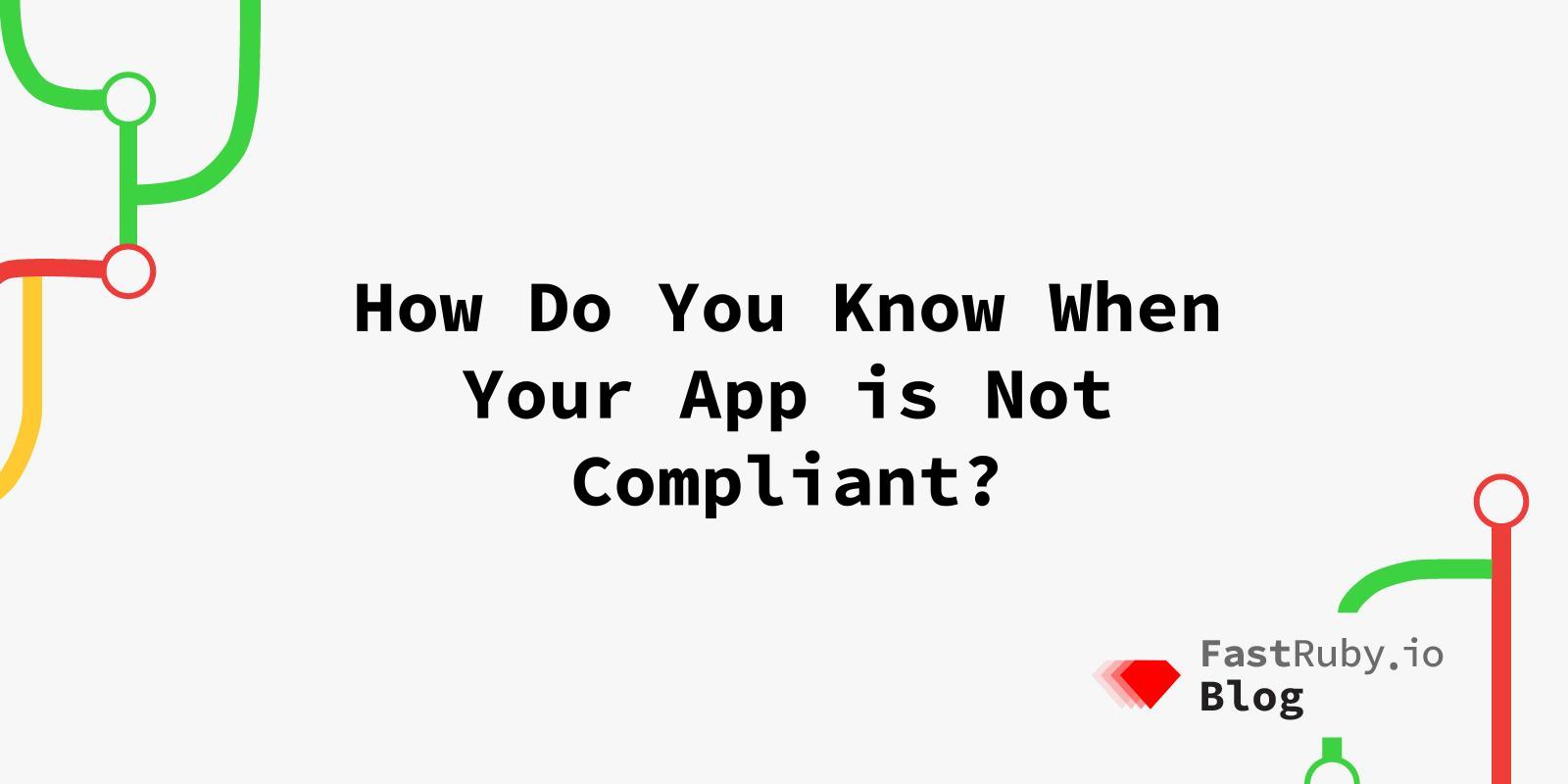
How Do You Know When Your App is Not Compliant?
Ensuring that your company’s website is current with compliance standards is extremely important and essential for any Rails application. Operating with a compliant application guarantees security that can help with handling sensitive data and maintaining users’ trust. The more compliant your website is, the more secure it will be against data breaches, which helps users feel safe when they’re using it.
So what does it take to be compliant? In this article, we will focus on security and cover some indicators to help identify if your Rails app might not be compliant anymore.
Understanding Compliance Requirements
Compliance requirements relevant to Rails applications include but are not limited to common standards and regulations such as GDPR, PCI DSS, HIPAA, and accessibility guidelines like WCAG. This can involve various aspects such as security, privacy, accessibility, and legal requirements.
Security Vulnerabilities
Security is an essential component for compliance. If your Rails app is not regularly updated with the latest security patches or if vulnerabilities are discovered in the libraries or dependencies it uses, it could become non-compliant with security standards.
Rails itself is really good at prioritizing security and provides many built-in security features. However as an application continues to evolve and grow with the introduction of new features, third party libraries or dependencies, chances are that vulnerabilities could have been introduced.
Regularly updating dependencies, implementing secure coding practices, and conducting thorough security assessments are essential steps to mitigate vulnerabilities and comply with industry standards like OWASP (Open Web Application Security Project) guidelines. This can save a company from any possible data breaches.
Resources listed below are helpful in identifying what type of security risks can exist and how to handle them:
- Rails Guides on Securing applications
- Top ten security risks to be aware of
- Rails Security Tips Cheatsheet
Legal and Regulatory Requirements
Depending on the nature of the app and the targeted industry, compliance with specific legal and regulatory requirements may be necessary. This could include regulations such as HIPAA or FINRA. If your application has not been audited more frequently, there is a chance that some of the rules and regulations for compliance with these standards have changed. This could indicate that the app is not compliant and this needs to be addressed immediately.
Data Privacy
If your app handles sensitive data (such as personal information or payment details) and fails to comply with data privacy regulations like GDPR, CCPA or PCI DDS, it could result in non-compliance. This includes inadequate data encryption, improper handling of user consent, or insufficient data access controls. As your application and user base expands, the risk of mishandling user data and sensitive information will increase as well. Periodic assessments and audits can help identify potential vulnerabilities before they escalate.
Accessibility
Compliance with accessibility standards such as the Web Content Accessibility Guidelines (WCAG) ensures that the app is usable by individuals with disabilities. Signs of accessibility issues include inaccessible forms, missing alternative text for images, and lack of keyboard navigation support. Automated accessibility testing tools and manual testing with assistive technologies can help identify and fix these issues.
Conclusion
Identifying non-compliance in your Rails app is crucial for maintaining data security, protecting user privacy, and upholding legal and regulatory requirements. By understanding common signs of non-compliance and implementing proactive measures to address these issues, you can ensure that your Rails app remains compliant and trustworthy for users.
Need help keeping your Rails applications secure? Contact us for a security audit!
